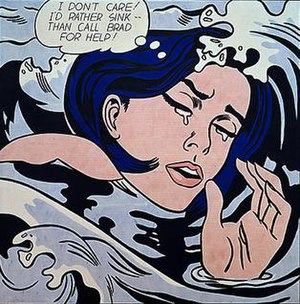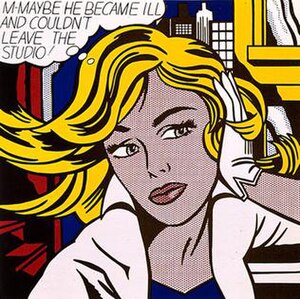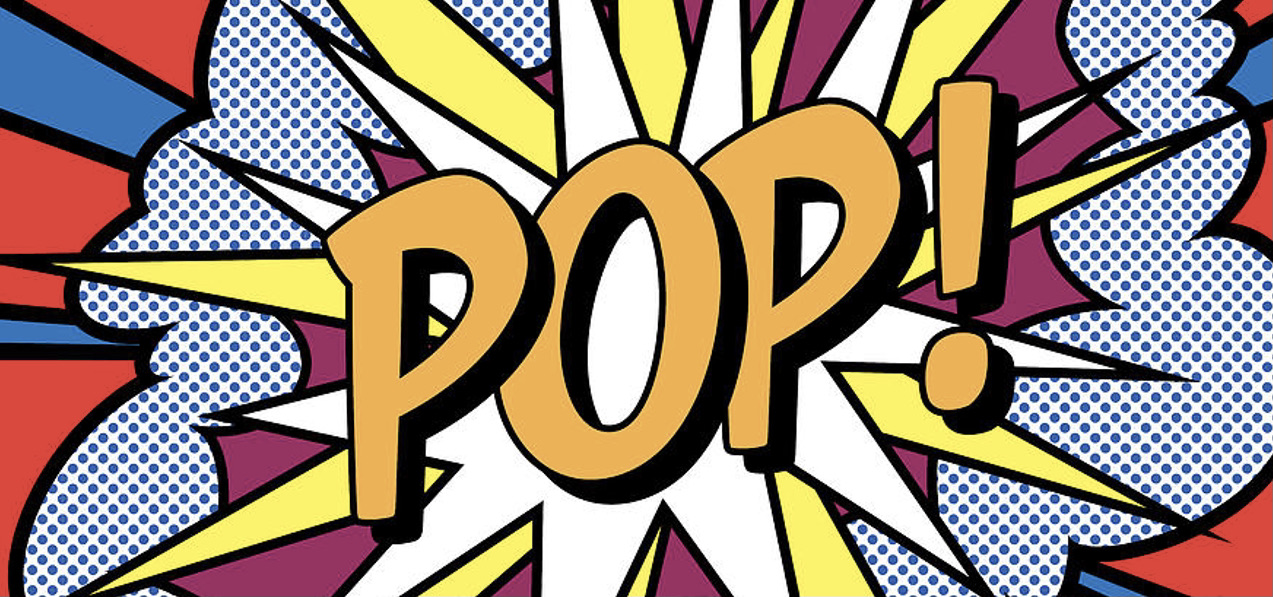Pop Art is known for being visceral, bright and eye-catching. Although it has been around for less than one hundred years, it is probably one of the most instantly recognisable art movements. Originally developed in both Britain and America, Pop art was intended to move away from abstract expressionism, a movement which utilises grand, gestural brush strokes giving the appearance of spontaneity. Pop Art sought to make art more relatable to the viewer, and move away from the fairly ambiguous works of expressionists such as William de Kooning.
The Independent Group, founded in London in 1952, is generally seen as the birth of the Pop Art movement. This group sought to move away from abstract works and instead focus on popular culture, elements of mass advertising, comics and movies. This ensured that the work would be instantly recongisable and relatable to the viewer. Veteran pop artist Richard Hamilton described Pop Art as the following to friends Peter and Alison Smithson:
‘Pop Art is: Popular (designed for a mass audience), Transient (short-term solution), Expendable (easily forgotten), Low cost, Mass produced, Young (aimed at youth), Witty, Sexy, Gimmicky, Glamorous, Big business.’
Pop Art in America really took off in the 60s, and also aimed to reflect popular culture back to the audience to enhance its relatability. This brought art closer to the general public, and attempted to distract them from the Cold War that had plagued the 50s. Some modernists disliked the movement because of depictions of mass media images, and at times, content that was deemed cheap. However, the movement captured the imagination of the public, as it had intended.
American artist Andy Warhol was a big figure in the movement and is probably one of the most famous. His work ‘Campbell’s Soup Cans’ exemplifies the movements ability to reflect popular culture back to the audience, and it’s bright colours make it for vibrant viewing. The piece made Warhol famous, and sparked debate over the merits, or lack of merits, that the work exhibited as well as Warhol’s ethics and ability as an artist. The works’ mundane and realistic nature directly combated abstract expressionism.
Roy Lichtenstein’s work is different to that of Warhol’s but their focus on colour still emphasises their important within the Pop Art movement. Lichtenstein was an American artist, who was inspired by the idea of parody and comic books. Lichtenstein focused on ‘strengthening of the formal aspects of the composition, a stylization of motif, and a ‘freezing’ of both emotion and actions.’ This snapshot of drama and emotion can be seen in his famed ‘Drowning Girl,’ an image which focuses on a girl engulfed by waves. She claims that she would rather drown than call ‘Brad for help!’ Lichtenstein used Ben-day dots to create the piece, a printing technique dating from 1879. This demonstrates that Pop Art used and responded to the art and technology that had preceded it. The effect is commonly used in comic books. The scene itself was inspired by one, ‘Secret Hearts.’ The image itself builds on emotion and melodrama, and the colours and outlines make it instantly recognisable.

Lichtenstein’s other work ‘M-Maybe’ also follows the same ideas and is in the style of a comic book. The beautiful heroine, as Lichtenstein’s often were, has her own thought bubble, and bright yellow hair, which contrasts with the blue, red and white backgrounds. The story cannot be contained in a singular panel, and her speech indicates that there is a past and future to the singular image, much like ‘Drowned Girl.’ Her worry and anticipation heightens the melodrama, and it is implied that the heroine is in some sort of emotional turmoil.

Traditional Pop Art survives today in the form of mainstream comic books, and in other artwork that shares the same ideas of eye-catching colour. Jeff Koon’s balloon animals are an example of this, and also provide relatable images for the viewer, as the original movement intended to do.
Thanks for reading!

